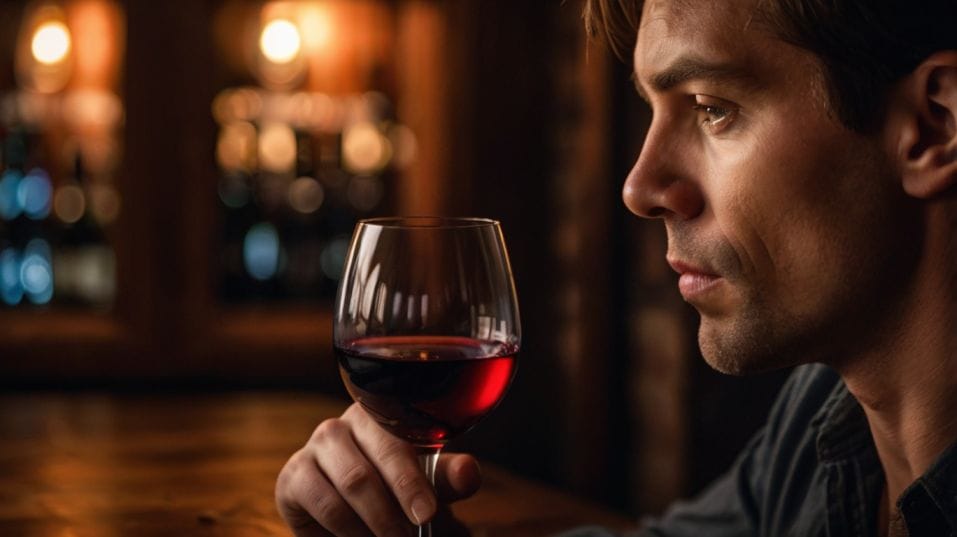Tasting Notes Made Easy: What to Look For
New to wine? Learn how to taste with confidence—no jargon, just sharp tips to help you trust your senses and decode your glass with ease.

Ever wondered why some people seem to get wine instantly while others feel lost at first sip? The secret isn’t fancy words or expert training—it’s attention.
Learning to taste well isn’t about memorizing flavors or impressing friends. It’s about slowing down, tuning in, and letting your senses lead.
This guide breaks it all down, so you can decode your glass with confidence—and start enjoying wine in a whole new way.
Don’t Memorize. Observe.
Too many beginners start with the wrong goal: to recite flavors like flashcards. But tasting well doesn’t begin with memory—it begins with presence.
Before you think about grapes or geography, pause and observe. What does the wine look like? How does it move in the glass? What do you smell before you even take a sip?
The color can give early clues. A pale straw white might be crisp and sharp. A deep ruby red could mean richer fruit or more age. But these are suggestions, not rules.
Clarity, viscosity, even the way the wine clings to the glass (called “legs” or “tears”) are all hints—but they’re not exams. Use them to get curious, not critical.
The same goes for aroma. Start simple. Ask yourself: is this fresh, ripe, cooked, or dried? Is it earthy or floral? Does anything jump out? Let your associations happen naturally. You’re not being tested; you’re building a map.
Structure Is What Makes a Wine Interesting
Flavors matter, but what really makes wine compelling is structure—the bones beneath the fruit. And structure is something you can feel.

Acidity
Acidity is one of the easiest elements to notice. It makes your mouth water, brings lift to the wine, and sharpens flavors. A wine with bright acidity feels energetic, even lean. Without it, a wine can feel flat or heavy, especially with food.
Tannins
Tannins are that drying sensation you get from many reds (and some skin-contact whites). They grip the gums and tongue. Good tannins give shape and aging potential.
Poorly balanced tannins can feel harsh or gritty. Notice whether the tannin feels smooth, firm, or raw—it tells you a lot about the wine’s balance and maturity.
Body
Body is the wine’s weight in your mouth. Is it light like water or rich like cream? This isn’t about alcohol content alone—it’s how everything from sugar to glycerol contributes to the wine’s physical presence.
A fuller-bodied wine doesn’t always mean better—it just tells you how it will behave with food or in different settings.
Finish
Finish matters more than many beginners realize. After you swallow, does the flavor linger? Does it fade cleanly? A long, balanced finish often signals quality.
A short or awkward finish can reveal flaws you might not have noticed on the first sip. These sensations are tools. The more you pay attention to how a wine feels, the easier it becomes to understand what you like—and why.
Fruit Gets the Spotlight, but It’s Not the Whole Show
When someone describes a wine as tasting like blackberries or stone fruit, it’s tempting to think they have a sharper nose than you. But most of the time, they’re just drawing on familiar references.
Fruit is where most of us start because it’s the most obvious. But don’t stop there. A simple red might remind you of strawberry jam, but what kind of strawberry?
Fresh-picked? Sun-warmed? Cooked down? These differences sharpen your tasting skills.
Beyond fruit, you’ll start noticing non-fruit elements. Does it smell earthy, like wet leaves or forest floor?
Spicy, like pepper or clove? Maybe a bit nutty, herbal, or floral? These secondary and tertiary notes usually come from winemaking choices, age, or grape variety—and they add complexity and story to the wine.
And it’s okay if your associations feel odd or personal. Wine isn’t about getting it “right.” It’s about noticing what’s really there—and trusting what your senses are telling you.
Context Changes Everything
Even the most thoughtfully made wine will show up differently depending on how it’s served. Temperature, glass shape, food pairings, and even your own mindset all affect how you taste.
Serving Temperature
Serving temperature is one of the most underrated tools. A too-cold white wine will mute aromas and acidity. A too-warm red can feel soupy or alcoholic. As a starting point: whites generally shine between 45–55°F, reds closer to 55–65°F.
Lighter reds benefit from a chill, and fuller-bodied whites can handle a little warmth. Don’t overthink it—just pay attention to how the wine changes in your glass as it warms up.
Glassware
Glassware isn’t about snobbery. A properly shaped glass collects aromas and directs the wine to the right part of your tongue.
That said, you don’t need a cabinet full of varietal-specific stems. One good all-purpose glass—tulip-shaped, clear, and not too small—will dramatically improve your tasting experience.
Food and Setting
Food and setting are also part of the equation. Salty food softens tannins. Acidic dishes make wines feel rounder. A joyful table changes the mood. The point isn’t to isolate wine from life, but to taste it more fully in context.
Build a Palate by Practicing, Not Performing
The best tasters aren’t born with magical abilities—they just pay attention over time. Tasting is a skill, not a gift. The more wines you experience side by side, the clearer the differences become.
Try tasting two wines next to each other. Maybe two different regions of the same grape. Or the same region, different vintages.
What changes? What stays consistent? Side-by-side comparison teaches you more in ten minutes than drinking two bottles weeks apart ever could.
And if you want to capture what you’re learning, skip the formal note-taking unless it truly helps you.
A few scribbled words like “zippy,” “dark plum,” or “dry finish” are more useful than a sentence that sounds like it belongs on a label. Your goal is to make sense of what you tasted—not to impress anyone.
Final Thoughts
Tasting wine well is about tuning in, not showing off. It’s a conversation between you and the glass—one you get better at every time you listen closely.
You don’t need to name every fruit, master blind tasting, or decode a region to enjoy wine on a deeper level. You just need to notice—how it smells, how it moves, how it lingers. That’s where confidence begins.
So pour something new. Taste it twice—once for curiosity, once for clarity. Swap your usual bottle for something unfamiliar.
Add one small detail to your ritual: a better glass, a slower pour, a quiet moment. Every step makes you a better taster—not someday, but right now. Because great wine isn’t just found. It’s noticed. And now you know exactly what to look for.




